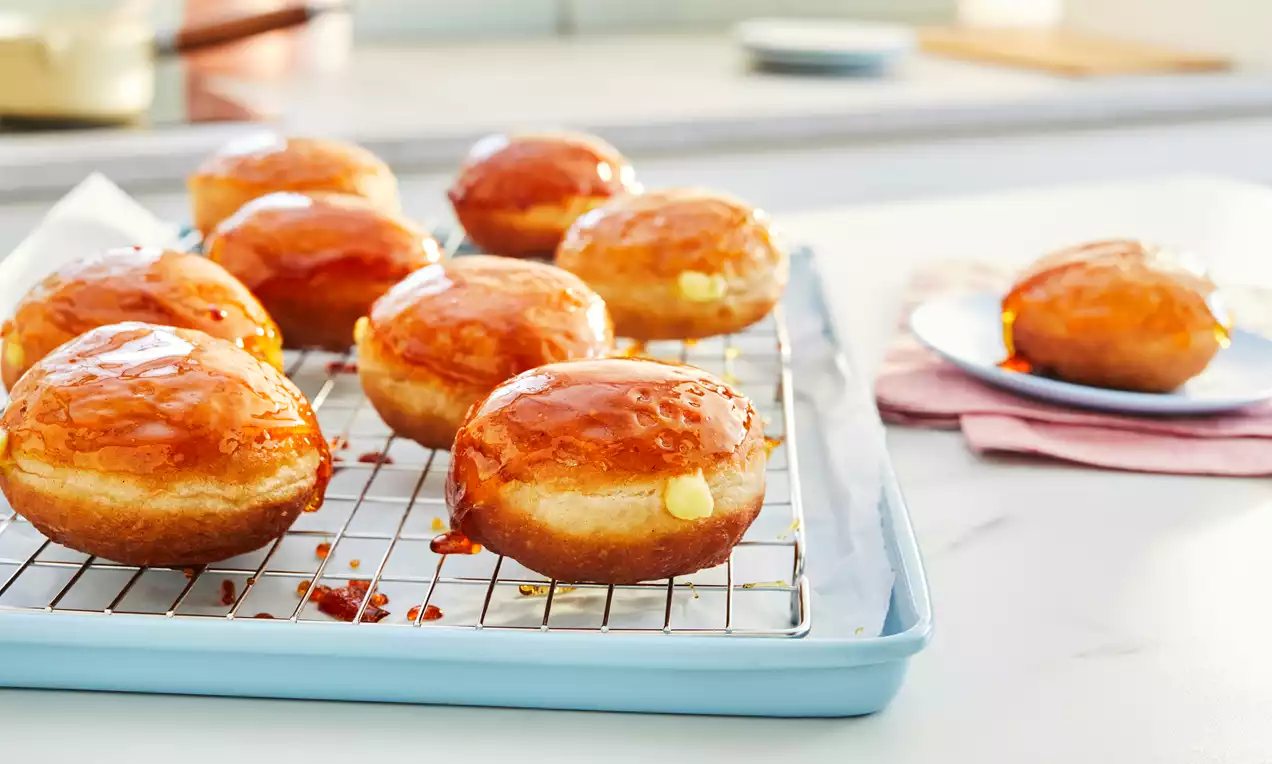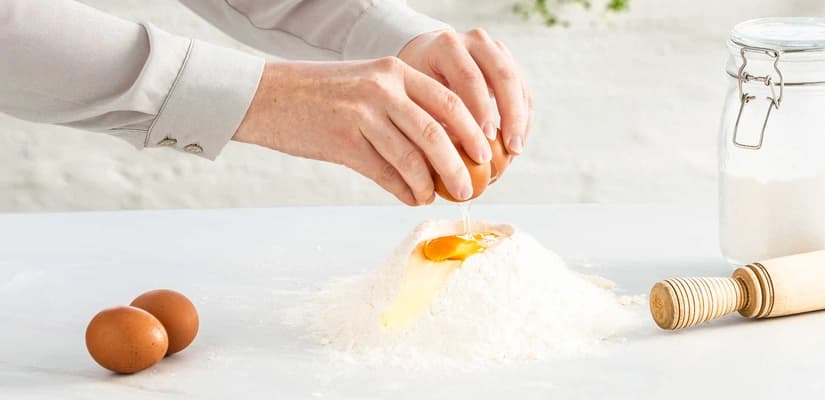
Creme Brulee Doughnuts
Recipe Ingredients
Buy the Products
How to Prepare:
First up, put the flour, sugar, salt, yeast and butter into a large mixing bowl, or the bowl of a stand mixer, and stir to combine. Using your fingertips, rub the butter roughly into the flour to small chunks.
Add the water, eggs and Vanilla Extract, stir to make a rough dough. Either knead with a dough hook in the stand mixer for 10 minutes, or tip out onto a lightly floured surface and knead for 15-20 minutes by hand, until you have a smooth, elastic dough with no lumps of butter in it.
Shape it into a ball, place in a large oiled bowl and cover with cling film. Allow to rise in a warm place for 1 – 1½ hour, until doubled in size.
Whilst your dough is rising, make the custard filling to give it plenty of time to cool down. Pop the egg yolks, caster sugar and cornflour and flour in a bowl and whisk together to make a smooth paste.
Pour the milk and Vanilla Paste into a saucepan and pop over a medium heat stirring until simmering. Pour half the hot milk mixture into the egg yolk mixture and whisk to combine. Pour back into the remaining milk mixture. Pop the pan back over a medium heat and continuously whisk until the mixture begins to bubble. As it bubbles it’ll thicken, continue to whisk for about 1 minute seconds and then remove from the heat, make sure your custard has thickened and boiled before removing from the heat as this will help it set. Pop in the butter and stir until it has melted into the custard.
Pour into a bowl and cover with cling film, ensuring the cling film touches the surface of the custard as this will prevent a skin from forming on the custard. Leave to cool in the fridge for 1-2 hours.
Once your dough has doubled in size, punch the risen dough to knock out the air. Pop the dough onto a lightly floured surface and divide the dough into 16 equal pieces. Shape the dough into balls by pulling the ragged edges to the base and pinch together at the base, roll the of dough under a cupped hand on the surface until smooth. Pop the dough bowls onto 2 baking trays lined with lightly oiled greaseproof, leave space between the balls for the second rise. Lightly cover with cling film as the dough needs room to expand and leave to rise again for about 1 hour, until the dough has puffed up and almost doubled in size.
Heat a large pan of oil to 160°C, once your oil is up to temperature using a slotted spoon, carefully place a couple of balls of dough into the pan, make sure you don’t overfill it as the doughnuts will puff up a lot as they cook. – we recommend cooking one doughnut first to see how much space you have in our pan. Use the slotted spoon to help you flip the doughnuts over so they cook on both sides, they will need about 2 minutes cooking on each side. They will be golden brown on both sides when fully cooked. Drain your cooked doughnuts a cooling rack with paper towel underneath to catch any excess oil.
Once your doughnuts are cool enough to handle. Pop your custard into a piping bag and cut a small hole in the end or you can use a patisserie filling nozzle if you have one. Use a small sharp knife to make an incision into the side of the doughnut and wiggle it around to create a hole in the centre of the doughnut. Insert the tip of the piping bag into the doughnut and fill with custard.
Pop the sugar and water into a saucepan over a high heat, swirling the pan to ensue all the sugar dissolves. Once the mixture starts to bubble reduce the heat to medium and heat until your caramel turns golden, swirling the pan occasionally, make sure you do not stir the caramel. Once golden, remove the pan from the heat and swirl to allow the colour of the caramel to deepen slightly.
Carefully dip the top of each doughnut into the caramel and allowing any excess to drip off before popping down to cool. The caramel is extremely hot so be careful and wear a glove for extra protection. If the caramel becomes to firm then pop back over the heat and swirl the pan until it is runny.
Leave your sugar topping to set hard and you are ready to dive into your creme brulee doughnuts!
RELATED RECIPES
More delicious ideas for you

Bread Recipes
Classic Wholemeal Bread

Bread Recipes
French Baguettes

Bread Recipes